Understanding the foundational principles of the ADX indicator is crucial for traders aiming to navigate market trends effectively. This technical tool, ranging from 0 to 100, offers insights into trend strength and potential entry points.
By grasping the significance of ADX values and incorporating them into strategic trading decisions, traders can enhance their overall performance. However, the true power of the ADX indicator lies in its application within a broader context of trading strategies.
Exploring the seven best steps to initiate with the ADX indicator can significantly elevate one's trading acumen and decision-making capabilities in the dynamic world of financial markets.
Understanding the ADX Indicator
The ADX Indicator, a vital tool in technical analysis, quantifies trend strength between 0 and 100 by analyzing the expansion of price ranges. Traders utilize the ADX to assess the strength of a trend in the market. This Indicator is composed of the ADX line and the +/-DI lines, which aid in trend analysis. ADX values below 25 typically suggest weak or non-existent trends, while values above 25 indicate the presence of a trend.
A rising ADX value indicates a strengthening trend, signaling potential trading opportunities, whereas a falling ADX suggests a weakening trend, prompting traders to exercise caution. The ADX is a versatile tool that helps traders identify strong trends, ranging markets, and potential breakouts. Understanding the ADX Indicator is crucial for traders looking to make informed decisions based on trend strength and market conditions. It is one of the best tools available for traders engaging in directional trading strategies.
Setting Up ADX on Your Chart

When setting up ADX on your chart, it is crucial to understand the basic steps involved in configuring this indicator.
This includes:
- Selecting the ADX indicator
- Inputting the desired period for calculation
- Adjusting parameters as needed
Proper setup ensures that you can effectively analyze trend strength using ADX values on your trading platform.
Chart Setup Basics
Initiate the chart setup process by incorporating the ADX indicator onto your trading platform display.
The ADX indicator, a strong technical analysis indicator, is best used to assess the strength of a price trend. When added to your chart, the ADX line provides valuable insights into the Price Trend Strength Index.
By understanding ADX strategies and readings, traders can make informed decisions based on the trend's strength. Ensure the ADX indicator is clearly visible on your chart with the period setting adjusted to your preference, typically set at 14.
Familiarize yourself with the color codes or line styles associated with the ADX indicator for easy interpretation, aiding in effective analysis of market trends.
Adjusting Indicator Parameters
Upon adjusting the ADX indicator parameters on your chart, consider experimenting with different settings to align with your trading style and preferred time frame.
The ADX, or Average Directional Index, is a technical indicator that measures trend strength. Adjusting the ADX period setting can impact the indicator's sensitivity to momentum. Shorter periods increase responsiveness to price changes, while longer periods provide a smoother average.
When using the ADX for trading, finding the best ADX setting is vital for accurate analysis. Lower periods may give timely but false signals, whereas higher periods offer more reliable indications. ADX readings play a crucial role in the ADX day trading strategy, as they help traders assess the strength of a trend and make informed trading decisions.
Interpreting ADX Values
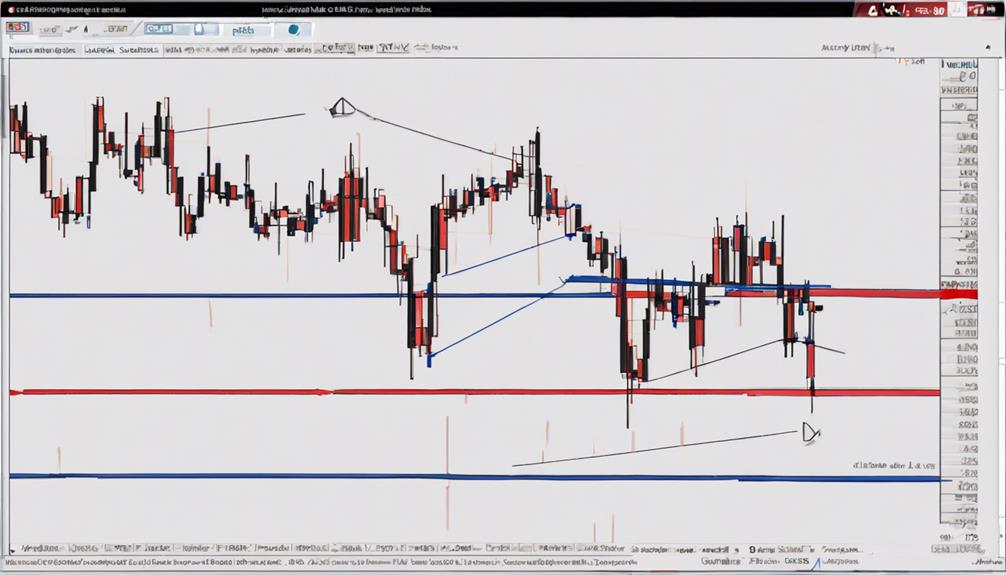
Understanding the ADX values is crucial for traders seeking to gauge the strength and momentum of trends in the market. ADX values range from 0 to 100, with readings below 20 indicating weak trends and above 50 suggesting strong trends.
A rising ADX signifies a strengthening trend, while a falling ADX implies a weakening trend. It is important to note that ADX does not determine trend direction but focuses on quantifying the strength of trends.
Values above 50 indicate momentum in one direction, aiding traders in identifying strong trending markets. Interpreting ADX values can help distinguish between ranging markets and new emerging trends, providing valuable insights for strategic decision-making.
Identifying Trend Strength With ADX
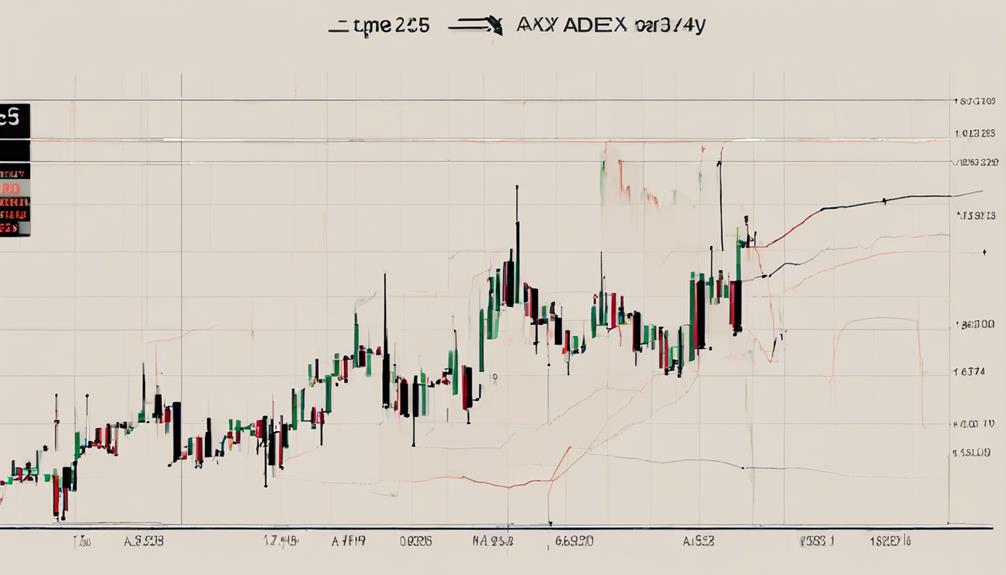
To effectively assess trend strength in the market, traders rely on the ADX indicator, which provides valuable insights into the intensity of existing trends. ADX, a technical indicator, measures trend strength on a scale of 0 to 100. Values above 50 indicate a strong trend, while values below 20 suggest a weak trend.
Rising ADX values signal a strengthening trend, whereas falling values indicate a weakening trend. It is important to note that ADX does not provide information about trend direction; instead, it helps traders confirm the presence of trends. ADX values between 20 and 50 reflect moderate to strong trends.
Using ADX for Entry Signals
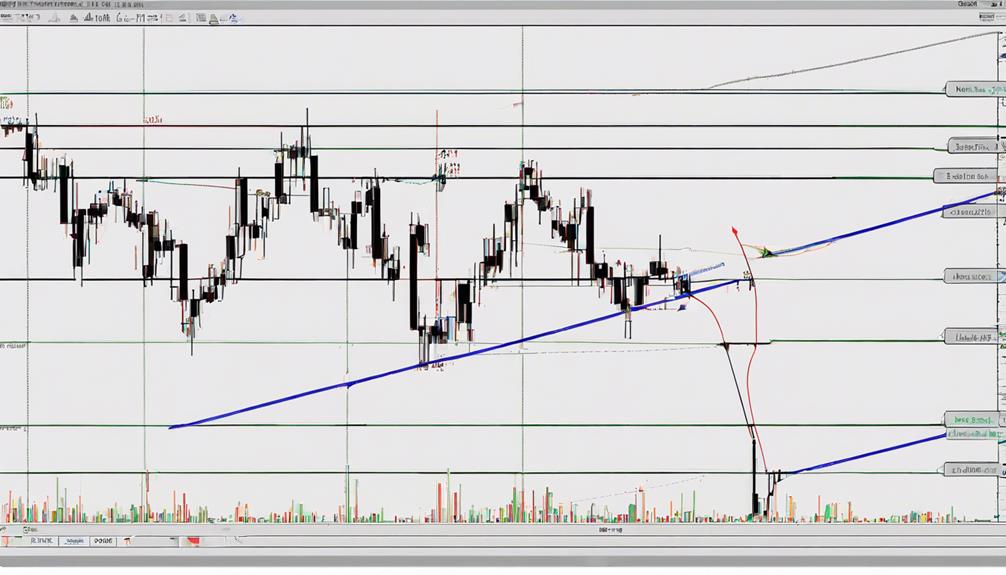
When utilizing the ADX indicator for entry signals, traders should pay close attention to ADX values above 25 to identify robust trend opportunities. The ADX is an Average Directional Index that helps determine the strength of a trend, with values above 25 typically indicating a strong trend in motion.
To effectively use ADX for entry signals, traders can follow these key steps:
- Combine with Directional Indicators: Incorporate ADX with the positive and negative Directional Indicators for more precise entry points.
- Validate Breakouts: Ensure ADX is above 25 to confirm sustained momentum when validating breakout trades.
- Consider Market Conditions: ADX values below 25 suggest a ranging market, offering opportunities for range-bound trading strategies.
- Use in Conjunction with Other Indicators: To enhance accuracy, consider using ADX alongside other indicators for confirmation before entering trades.
Managing Risk With ADX
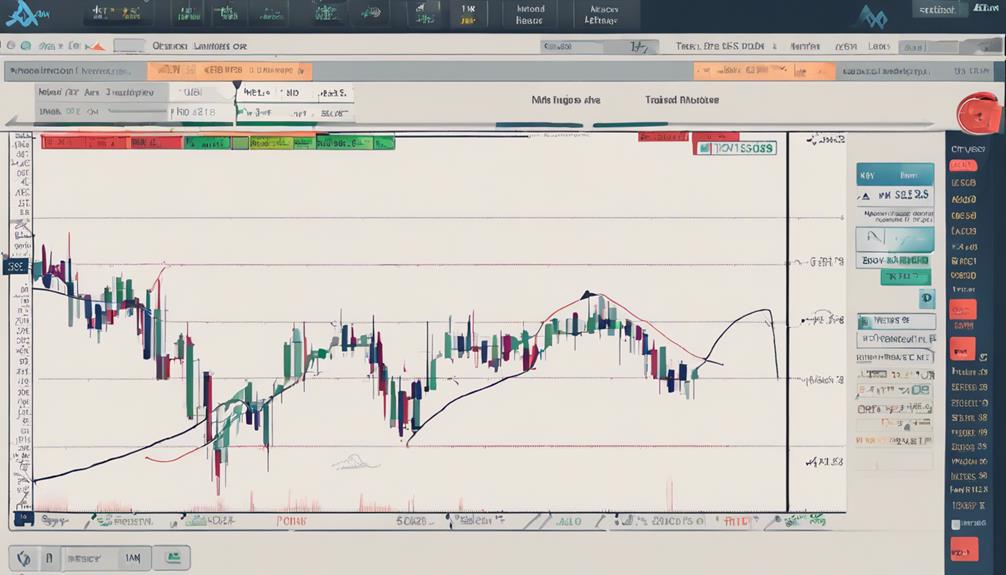
Managing risk effectively is crucial in trading, and the ADX indicator plays a significant role in this aspect.
By understanding risk management strategies and setting appropriate stop-loss levels based on ADX readings, traders can protect their capital and optimize their trading outcomes.
Utilizing ADX in conjunction with other risk mitigation tools enhances decision-making and fosters a disciplined approach to trading.
Risk Management Strategies
Utilizing the ADX indicator enables traders to implement effective risk management strategies by tailoring stop-loss levels and position sizes to prevailing trend strength, safeguarding against adverse market movements.
When using the ADX indicator for risk management in Forex trading, consider the following strategies:
- Set Stop-Loss Levels: Utilize ADX to determine when the trend is strong enough to warrant wider stop-loss levels.
- Adjust Position Sizes: Scale positions based on ADX readings to manage risk exposure in volatile market conditions.
- Combine with Trailing Stops: Incorporate trailing stops along with ADX to secure profits while allowing for potential trend continuation.
- Monitor ADX Levels: Regularly track ADX levels to avoid overleveraging positions, especially during uncertain market conditions.
Setting Stop Loss
To effectively manage risk while utilizing the ADX indicator, traders can strategically set stop-loss levels based on market volatility and trend strength. Setting a stop loss with ADX involves determining an exit point at an appropriate distance from the entry point, considering recent price fluctuations and the strength of the trend.
ADX can provide a clear indication of trend strength, assisting traders in setting stop losses beyond market noise and reducing the risk of premature exits. By using ADX to determine stop loss levels, traders can manage risk effectively and remain in trades longer, especially during strong trends.
This approach enhances risk management strategies and contributes to making informed trading decisions based on market dynamics.
Advanced ADX Trading Strategies
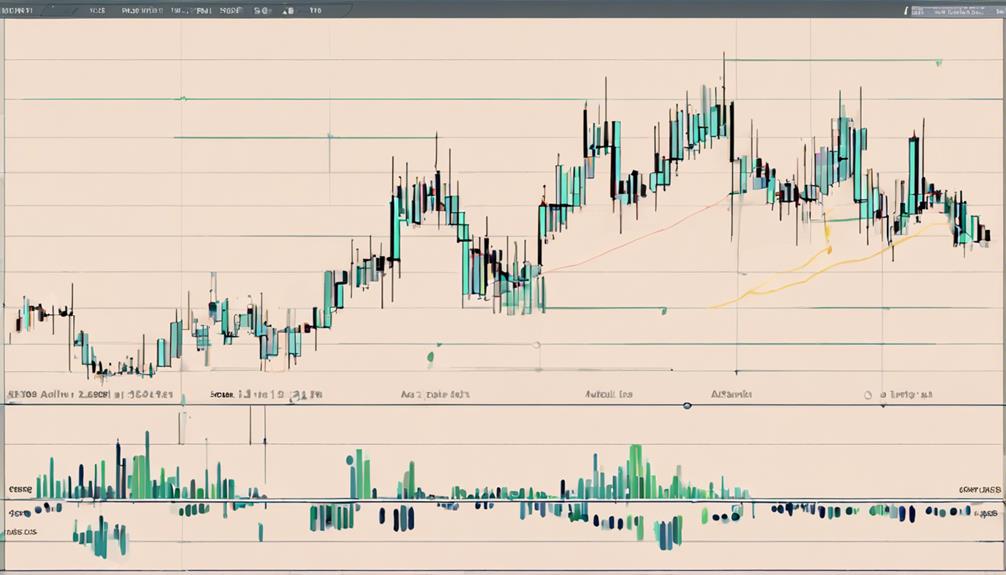
Implementing the Advanced ADX Trading Strategies requires a comprehensive understanding of how to effectively combine the ADX indicator with other key technical tools for successful market analysis and decision-making. To optimize your trading outcomes, consider the following strategies:
- Utilize ADX Crossovers: Use ADX crossovers with key levels such as 25 to signal potential trading opportunities.
- Combine ADX with RSI: Enhance your analysis by combining the ADX strength indicator with RSI readings for more accurate entry and exit points.
- Confirm Trend Strength: Look for ADX values above 25 to confirm the strength of a trend before making trading decisions.
- Validate Breakouts: Use ADX to validate breakouts and ensure that the price momentum is sustainable.
What Are the Best Strategies to Implement with the ADX Indicator?
Navigating the ADX indicator tutorial can help traders identify the strength of a trend. The best strategies to implement with the ADX indicator include combining it with other trend-following indicators, using it to confirm trend strength, and setting specific thresholds for entry and exit points.
Frequently Asked Questions
How Do You Use ADX Indicator Effectively?
To use the ADX indicator effectively, monitor trend strength by interpreting rising or falling values. Values above 25 indicate robust trends for trading strategies. Enhance accuracy by combining ADX with indicators like RSI or MACD, confirming breakout validity for sound trading decisions.
What Is the Best Indicator to Combine With Adx?
To optimize ADX's efficacy, pairing it with the Relative Strength Index (RSI) can refine identification of market conditions. This synergistic combination offers enhanced insights into overbought and oversold territories, aiding decision-making in ranging scenarios.
Which Time Frame Is Best for ADX Indicator?
The time frame most suitable for the ADX indicator is typically the default setting of 14 bars. Traders can adjust this based on their trading style; shorter time frames like 3 or 7 bars for day trading and longer time frames such as 21 or 30 bars for swing trading or trend following.
How Do You Calculate ADX Step by Step?
To calculate ADX, compute the Directional Movement (DM) and True Range (TR). Smooth +DI and -DI with EMAs, calculate Average True Range (ATR), then derive ADX from these values. ADX assesses trend strength from 0 to 100.
Conclusion
In conclusion, mastering the ADX indicator can significantly enhance trading strategies and outcomes. By understanding, setting up, and interpreting ADX values, traders can effectively identify trend strength, generate entry signals, and manage risk.
Utilizing advanced ADX trading strategies can further optimize trading decisions. As the saying goes, 'Knowledge is power,' and in the world of trading, knowledge of the ADX indicator can empower traders to make informed and profitable decisions.
